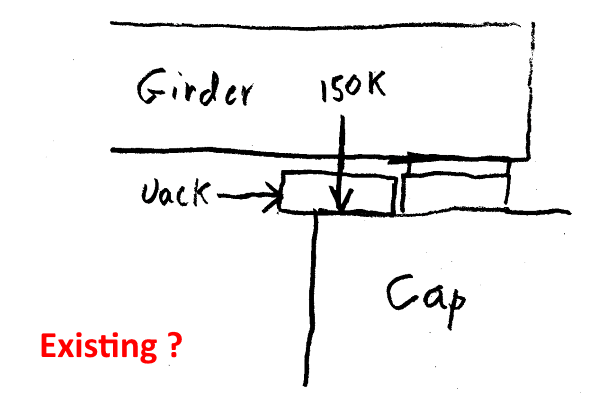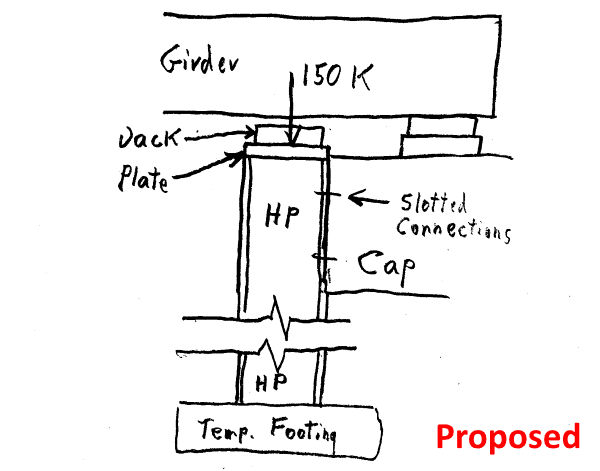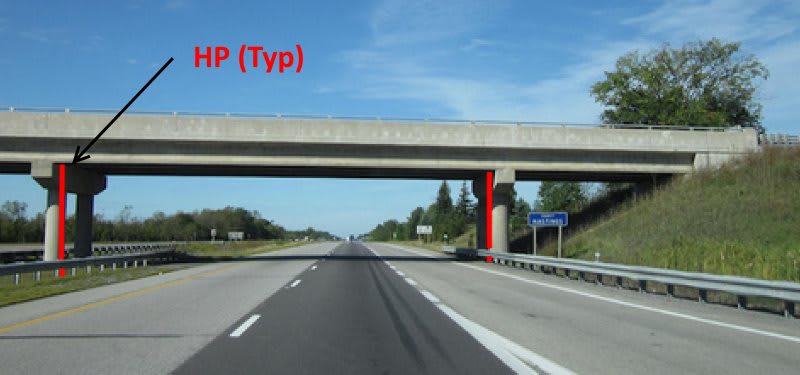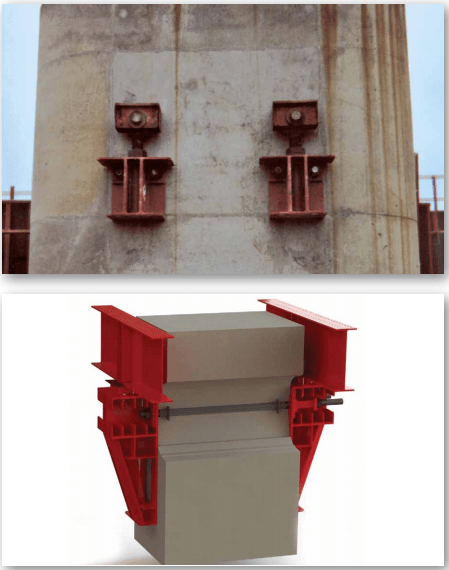Hello - I’m wondering if anybody knows about any provisions from AASHTO, ACI, or others for dealing with edge loading of concrete? Looking at AASHTO, all I find regarding bearing is in AASHTO 5.7.5 which seems of which seems insufficient for my situation as described below.
The project I'm looking at involves jacking highway bridge girders so their bearing pads can be replaced. Unfortunately, there is only a flat surface of 4” of concrete behind the grider shoes to place the jacks; this is too little as the 100-ton jacks are 6” in diameter. The current idea is to temporarily anchor an HP-section to the side of the pier and weld a PL 2”x16”x16” bearing plate to top. The plate would be positioned so it laps over the 4” of concrete. The jack would then be positioned so it sits over the 4” of concrete and 2” sitting over the HP-section; in the end the center-of-load will be sitting 1” from the bent edge.
I’m concerned about loading such a small area of concrete so close to the edge. The load will be ~150-kips once factored. The HP-section anchorage cannot support much load as the connection is sensitive to concrete breakout, so maximizing the bearing on the concrete is required. Per AASHTO 5.7.5 for bearing, a 4”x16” area of concrete should support ~220-kips minimum, but given how the load is positioned it doesn't feel right taking that as the final answer (the risk of spalling or break-away comes to mind). I appreciate any leads or ideas anyone might have. Thank you.
The project I'm looking at involves jacking highway bridge girders so their bearing pads can be replaced. Unfortunately, there is only a flat surface of 4” of concrete behind the grider shoes to place the jacks; this is too little as the 100-ton jacks are 6” in diameter. The current idea is to temporarily anchor an HP-section to the side of the pier and weld a PL 2”x16”x16” bearing plate to top. The plate would be positioned so it laps over the 4” of concrete. The jack would then be positioned so it sits over the 4” of concrete and 2” sitting over the HP-section; in the end the center-of-load will be sitting 1” from the bent edge.
I’m concerned about loading such a small area of concrete so close to the edge. The load will be ~150-kips once factored. The HP-section anchorage cannot support much load as the connection is sensitive to concrete breakout, so maximizing the bearing on the concrete is required. Per AASHTO 5.7.5 for bearing, a 4”x16” area of concrete should support ~220-kips minimum, but given how the load is positioned it doesn't feel right taking that as the final answer (the risk of spalling or break-away comes to mind). I appreciate any leads or ideas anyone might have. Thank you.



![[idea] [idea] [idea]](/data/assets/smilies/idea.gif)

![[noevil] [noevil] [noevil]](/data/assets/smilies/noevil.gif) .
.